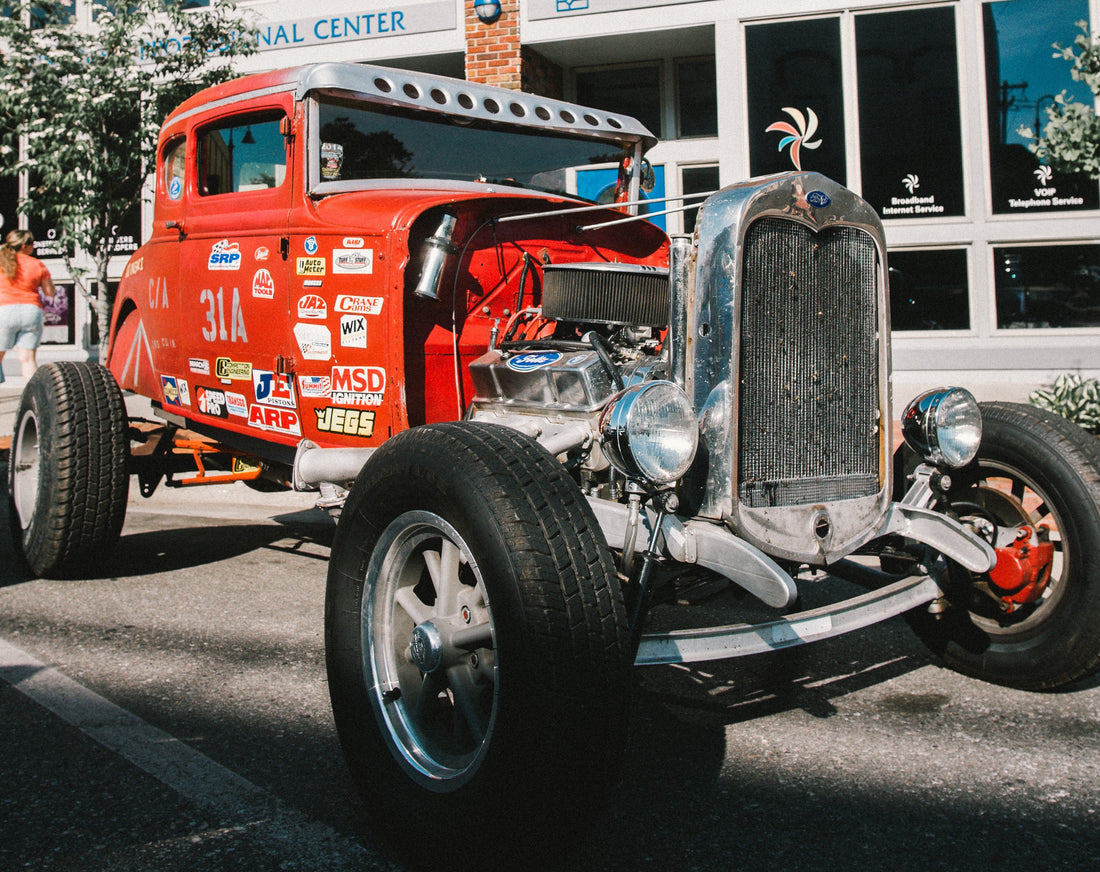The gasser style hotrod is a type of drag racing car that emerged in the 1950s and 1960s. It is characterized by a high front end, a straight axle, and a jacked-up rear end, giving the car a distinctive "gasser" stance. The name "gasser" comes from the use of gasoline as the fuel for these cars, as opposed to alcohol or other fuels used by other types of drag racing cars.
The history of the gasser style hotrod can be traced back to the early days of drag racing in the 1950s. At that time, drag racing was a new and exciting sport, and hotrodders were constantly experimenting with new ways to make their cars go faster. One of the ways they did this was by altering the weight distribution of their cars, by moving the engine and other heavy components forward in the chassis. This gave the car more traction at the rear wheels, and helped it launch off the starting line more quickly.
One of the pioneers of the gasser style was "Ohio" George Montgomery, who built a 1933 Willys coupe that was nicknamed "the World's Wildest Willys". Montgomery's car was a radical departure from the traditional hotrods of the time, with its high front end and jacked-up rear end. He also used a straight axle, which gave the car a bouncy ride but also helped it launch off the starting line with more traction.
Other hotrodders soon followed Montgomery's lead, building their own gasser-style cars to compete in drag racing events. The gasser style became especially popular in the late 1950s and early 1960s, as drag racing grew in popularity and more and more hotrodders got involved in the sport.
One of the most famous gasser-style cars of all time is the "Stone, Woods & Cook" 1941 Willys coupe, which was built by a group of hotrodders in California in the early 1960s. The car was named after its three owners: Doug "Cookie" Cook, Jim "Jake" Jacobs, and Fred "Smokey" Stone. The car was known for its distinctive paint job, and for its high stance, which made it look like it was about to take off.
The Stone, Woods & Cook Willys became one of the most successful gasser-style cars of all time, winning numerous drag racing events and setting records along the way. It was a fan favorite, and its distinctive look and high-performance capabilities helped to popularize the gasser style even further.
By the mid-1960s, however, the gasser style began to fall out of favor, as drag racers began to experiment with new technologies and techniques. Front-engine dragsters, for example, became increasingly popular, as did Funny Cars, which featured fiberglass bodies and supercharged engines.
Despite this shift, however, the gasser style remained an important part of hotrod history, and many hotrodders continued to build and race gasser-style cars well into the 1970s and beyond. Today, the gasser style is still celebrated by hotrod enthusiasts all over the world, with many vintage gasser-style cars still in existence and actively raced in nostalgia drag racing events.
In conclusion, the gasser style hotrod was a significant development in the history of hotrodding and drag racing. Its distinctive look and high-performance capabilities helped to popularize drag racing and inspire generations of hotrodders. While its popularity may have waned over the years, the gasser style remains an important part of hotrod history and a favorite of enthusiasts around the world.





